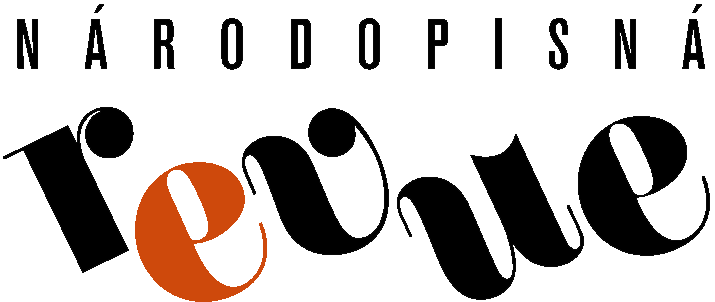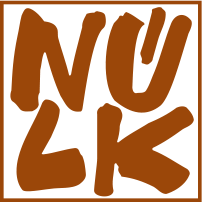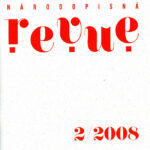Journal of Ethnology 2/2008 deals with the theme of folk dress. Martin Šimša submits a historical excursion to the development of an important part of men´s clothing - trousers (Canvas trousers - nohavice - legacy of the Middle Ages or a contribution of the Carpathian shepherd’s culture?). In her contribution, Petra Mertová gives an overview of fabrics used to make traditional clothing in the 19th and 20th centuries (Notes on fabrics in the Czech Lands (taking into account the territory of Western and Eastern Slavs). Marta Ulrychová focuses on the contemporary form of the women´s folk costume in a particular location of the Domažlicko ethnographical area (Women’s Carnival Costumes in Postřekov, the Region of Chodsko). Lenka Drápalová pays her attention to stockings - an integral part of the women´s folk costume in the region of Moravian Walachia (Cast-off stockings as a part of women´s traditional dress in Rožnov pod Radhoštěm). Helena Beránková brings the information about the structure of clothing of a contemporary traditional dress wearer from a particular location in Moravian Slovakia (Traditional dress at the present /with an example of one of the last wearers in Uherský Ostroh/).
Stopping with Photos section is devoted to the slides by Franz Stödtner (1870-1944) from the environment of a German textile factory (author Helena Beránková). Transferring Tradition column publishes the results of a fi ve-years survey among school children under the title Is Folklore a Kind of Art? A testimony of children - not only of those from folklore ensembles (author Alena Schauerová). Social Chronicle remembers the anniversaries of the ethnologists Leopold Pospíšil (born 1923), Viera Gašparíková (born 1928) and Dušan Holý (born 1933). In other regular columns, the reports of conferences and other professional branch activities and festivals and the reviews of new book editions are published.
Canvas Trousers – nohavice – Legacy of the Middle Ages or a Contribution of the Carpathian Shepherd’s Culture?
The research of the folk dress ranked among frequent themes of the domestic ethnology for many years. Studies from that range, however, dealt more with the research of women’s dress parts and relating issues, while the men’s dress was more on the fringe of interest. The author tries to cover this gap partially with a study aimed at a characteristic men’s dress part – the canvas trousers – nohavice – that belonged to the typical features of traditional men’s dress in the Eastern and South-Eastern Moravia in the past. The contemporary ethnology sees their origin in high Middle Ages as the foregoing development resulted in the rise of complete closed trousers. Although the scientists suppose the traditional canvas trousers – nohavice – to originate in the aforementioned trousers, no study has tried to research and analyse this connection in greater detail up to now. The confrontation of cuts of me- dieval and modern canvas trousers – nohavice – with subsequent taking account of their territorial dissemination serve as a basis of this contribution.
Notes on fabrics in the Czech Lands (taking into account the territory of Western and Eastern Slavs
The contribution deals with traditional weaver’s trade in Central and Eastern Europe. This branch had a rich tradition here and its possibilities were influenced by used textile materials – flax, hemp and wool. Cotton and silk were processed rarely -more from the mid-19th century. Another fact, which affected the appearance of weaver’s products, was the expansion of the horizontal loom with frame (frame loom with shafts) which was used as early as since the 11th century in Europe. Canvas, hemp, wool fulled fabrics and semi-wool non-fulled fabrics ranked among the basic traditional products. Within traditional weaver’s trade in Central, Eastern and a part of Northern Europe, wool striped and checked fabrics had great importance. They were peculiar to country weavers and their patterns were typical for relating regions. They were most often used for women’s skirts; their colours were rather dark, with predominant red, brown, blue and black colours. Within traditional weaver’s trade in Bohemia and Moravia, the patterning by an additional weft (float length), which has different names in folk culture, has been kept partially. The aforementioned technique formed the characteristic patterns on fabric and was applied mainly for women’s dress on blouse-sleeves and aprons, on decorated parts of women’s underclothes as well as on soft furnishings within the entire Slavic environment.
Women’s Carnival Costumes in Postřekov, the Region of Chodsko
The text pays attention to three contemporary variant of festive costumes worn by the women during the Carnival period in Postřekov in the so-called Upper Chodsko Region. The author’s interest in women’s dress is determined by the fact that the men – except for the young men until 18 and the preschool-aged boys – make a point of non-wearing the folk costumes in this location. The recorded variants confirm the lifetime of women’s costumes that fulfil mainly the locally representative and aesthetical functions. For the time being, nothing seems to suggest that its popularity should be on the wane. On the contrary, one can notice opposite trends becoming evident by plenty of exemplars newly made not only upon the wish of local inhabitants but also of those who visit the village as guests and who like to take part in the Carnival balls. The study describes on which occasion a certain variant are worn; it mentions also an overview of colour combinations in accordance with the canon that the women try to keep strictly. Determining the functions, the author found inspiration in the publication by Petr Bogatyrev from 1937 on the analysis of folk costumes at the opposite end of the Czech Republic (Moravian Slovakia). This publication applying the functional and structural analysis goes beyond the scope of foregoing and later works that preferred the predominantly diachronic point of view and the detailed description of costume types and variants.
Cast-off Stockings as a Part of Traditional Women ́s Dress in Rožnov pod Radhoštěm
The written, iconographic and tangible sources, not always maintained in sufficient quantity, document the existence of many parts of the traditional folk dress in Moravian Wallachia. Those parts, however, ceased to be used as early as during the second half of the 19th century. The cast-off stockings made of traditional materials – sheep wool or cloth – and worn both for everyday occasion and for formal wear ranked among the aforementioned parts. Although they were ugly as to the aesthetic standpoint of contemporary observers, the wearers considered them an integral part of their dress not only because of their good properties – warmness and light water-resistance. Nowadays, the amateur and professional public can see the stockings to a limited extent at the museum exhibitions. In 2007, the Museum of Moravian Wallachia in Rožnov pod Radhoštěm solved the grant project called Extinct World of Traditional Techniques whose partial task was to collect the documentation on appearance and dissemination of cast-off stockings in the region of Rožnov and to verify the technique by an attempt with making this garment part.
Traditional Dress at the Present (with an Example of One of the Last Wearers in Uherský Ostroh)
South-Eastern Moravia is a region where we can find some expressions of traditional folk culture even at the beginning of the third millennium, although that region is perfectly accessible as to communication and information and it accepts the globalization trends in many respects. The traditional dress is an example. The author noticed five last women (born in the 1920s) in the chosen location (Uherský Ostroh) who usually wear the everyday, festive and ceremonial variants of the traditional dress. The contribution pays its attention to the relation of one of those wearers of the specified traditional dress to her own dress. In quantitative and qualitative respects, her individual wardrobe evaluates and follows the phenomena that influence and enable the tradition lifetime. The contribution is tangential with the comparison of how the festive and ceremonial variants of the traditional dress function within the contemporary cultural life of the location (on secular and church holidays and at folklore ensemble performances). It draws the attention to the problems that have not been reflected in an expert way yet and that deals with the creation of folk costume stylizations in the locations where the traditional dress is a living and developing part of the local tradition.



